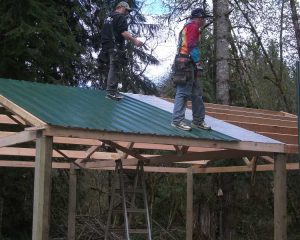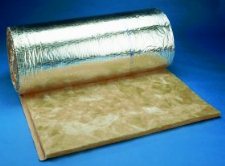How to Reduce Condensation in Post Frame Buildings
Condensation occurs when excessive atmospheric water vapor comes into contact with a cold surface. Post frame building condensation will be particularly common in winter time, in regions where temperatures reach dramatic lows, and also in spring and early summer when ground temperatures are still cool but humidity increases. Post frame building condensation can be a serious problem, as excess moisture can create an uncomfortable environment and even contribute to mold and mildew growth.
Heat Building
For condensation to build up, temperature of building floors, wall and other solid surfaces must be lower than dew point (temperature where water condenses). So if you want to keep condensation away, maintain a warm post frame building. Avoid using propane heaters, because combustion process creates water vapor. Electric heaters can effectively keep temperature and condensation under control.
Use Vapor Barriers
 Vapor barriers can help to keep condensation under control if installed in right places. Ceiling level vapor barriers are a bad idea, because they keep water vapor trapped inside the building, rather than allowing it to exhaust through a continuous ridge vent. Wall vapor barriers, can prevent condensation from penetrating your building’s drywall and insulation. Look for an insulation product with a built-in vapor barrier (e.g. fiberglass batts with a kraft paper facing), or consider installing plastic vapor barrier sheets directly over your existing unfaced insulation.
Vapor barriers can help to keep condensation under control if installed in right places. Ceiling level vapor barriers are a bad idea, because they keep water vapor trapped inside the building, rather than allowing it to exhaust through a continuous ridge vent. Wall vapor barriers, can prevent condensation from penetrating your building’s drywall and insulation. Look for an insulation product with a built-in vapor barrier (e.g. fiberglass batts with a kraft paper facing), or consider installing plastic vapor barrier sheets directly over your existing unfaced insulation.
Keep Water Out
If vehicles or equipment become covered in rain or snow, and you then park them in your post frame building, this added moisture can contribute to condensation. If you must park something wet inside, try drying it as best possible before moving it inside. Also, if you have water seeping into your post frame building from rain or snow melt, try installing a drain outside to keep water issues in check. Put simply, do not let water in.
Seal Floor
A garage floor coating, or epoxy, can help to dramatically reduce condensation by limiting water vapor passing through your building’s concrete slab.
Other Solutions
Remove anything from your post frame building containing or requiring water. This can include houseplants, drying laundry, and even bags of trash containing moisture. Installing continuous ridge vents (in combination with vented eave soffits) can also reduce condensation by drawing out warm moist air containing water vapor. In some cases, a dehumidifier can help to remove light to moderate condensation, because dehumidifiers are designed to attract stray water vapor onto specialized coils, trapping it and draining resulting liquid into a reservoir.
 If the builder would have properly installed the insulation between the purlins, with the Kraft facing towards the climate controlled area, making sure all seams were sealed, it would have been both effective as insulation and the vapor barrier would have kept the warm moist air inside the building, from condensing on the underside of the roof steel.
If the builder would have properly installed the insulation between the purlins, with the Kraft facing towards the climate controlled area, making sure all seams were sealed, it would have been both effective as insulation and the vapor barrier would have kept the warm moist air inside the building, from condensing on the underside of the roof steel.






